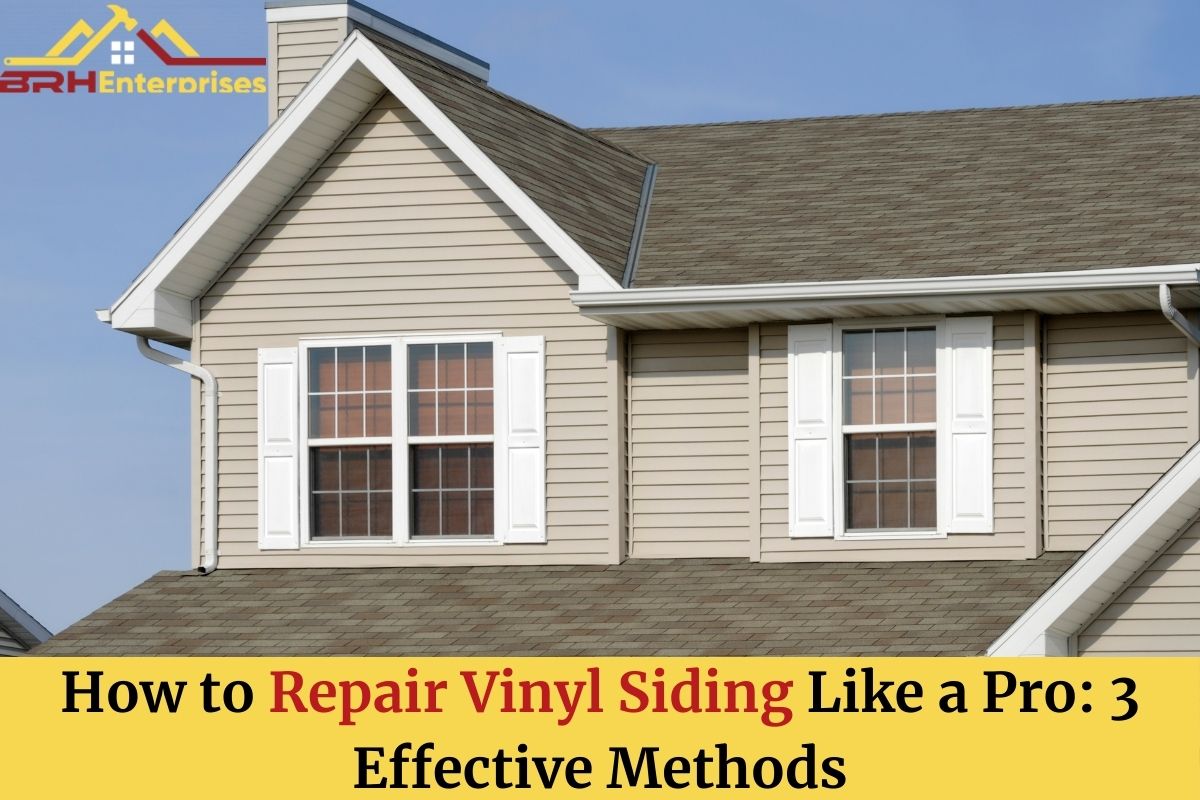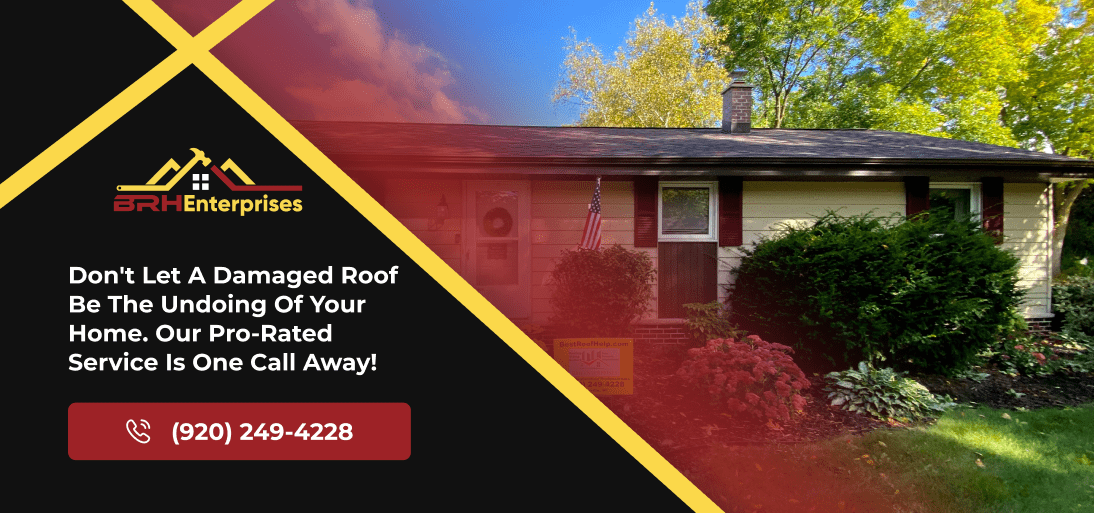How to Repair Vinyl Siding Like a Pro: 3 Effective Methods
Estimated Reading Time : 6 Min.

Vinyl siding is a favorite pick for homeowners because it’s tough, easy to look after, and looks good. But just like anything outside, it can get damaged by the weather, accidents, or if it’s not installed correctly. Things like small holes, cracks, or bent panels can decrease your house’s curb appeal and lead to further damage.
In this blog post, we’ll check out three ways to repair vinyl siding like a pro. Whether you’ve got small problems or big ones, these tricks will help you keep your siding strong and looking good.
Also Read: Vinyl Siding – Problems, Costs, Pros And Cons
Top 3 Vinyl Siding Repair Methods
Here are some of the best ways to repair vinyl siding:
Method 1: Patch Small Holes and Cracks

If you ignore minor holes and cracks in your vinyl siding, they could worsen the appearance of your home and even cause more serious issues down the road. Still, if you know what to do, fixing them isn’t too tough. Here’s a quick guide on sealing those tiny gaps and cracks in your vinyl siding:
1. Locate the Damaged Areas:
Check your vinyl siding carefully to look for any holes or cracks that require repair. Examine closely the areas around windows, doors, and corners where damage frequently occurs.
2. Clean the Spot:
Make sure the area surrounding the hole or crack is clean before beginning any repairs. To remove any dirt or loose items, use a gentle brush or cloth along with a mild soap and water solution. A spotless surface improves the patch’s adhesion.
3. Select Quality Materials:
Use high-quality products designed specifically for this task when choosing materials to fill in minor gaps and fractures in vinyl siding. Using inexpensive materials could cause your repair to stand out and wear out quickly. To get a repair that looks good and lasts, spend extra on high-quality materials.
4. Apply the Patch:
To fill in the hole or crack, use silicone caulk or a vinyl siding repair kit, depending on how big it is. Follow the guidelines included with the product you are using. Make sure the patching material completely covers the hole or crack by applying a generous amount of it.
5. Smooth Things Out:
After applying the patch material, remove any excess by smoothing it out with a putty knife. This step is crucial for the repair to appear seamless and blend in with the siding. Make sure the patch is level and presents well by taking your time.
6. Allow It to Dry:
As directed, allow the patch to dry completely after smoothing it out. In order to ensure that the patch adheres to the siding properly, this drying time is crucial. While the patched area is drying, avoid touching or tampering with it.
7. Paint Over It:
After the patch has completely dried, consider painting the surrounding siding in a color that complements it. Choose any type of exterior paint that is suitable for vinyl surfaces. Evenly paint the repaired area to make it resemble the siding’s remaining portion.
Method 2: Replace Damaged Panels

Maintaining your home’s exterior is vital, and replacing damaged vinyl siding panels is an important job. Fixing damaged panels improves your home’s appearance and keeps it structurally sound. Addressing problems early helps prevent issues like moisture getting in or major damage. Here’s a guide on how to do it effectively:
1. Identify the Panels that Need to be Replaced:
Check your vinyl siding for cracks, warping, or other damage to know which panels need replacing. Make sure you pinpoint the exact ones for a smooth repair.
2. Take Out the Damaged Panels:
Carefully remove the damaged panels with these steps:
- Use tools like a zip tool or pry bar to help.
- Start at one end and gently detach the panel from the siding below.
- Slide the zip tool along the bottom edge until the panel comes off.
- Be careful not to harm nearby panels.
3. Install the New Panels:
After removing the damaged ones, follow these tips to install the new panels:
- Slide the replacement panel into place, making sure it fits with the rest of the siding.
- Push it up until it locks into the piece below.
- Secure it with roofing nails spaced about every 16 inches.
- Leave a small gap between the nail head and the siding to allow for movement.
4. Ensure Proper Installation:
To do it right and prevent future issues:
- Don’t nail too tightly, as it can cause problems when the siding expands.
- Handle the new panels with care to avoid damage during installation.
- Follow the manufacturer’s instructions for securing and aligning the new panels correctly.
By following these steps and using the right tools and methods, you can replace your damaged vinyl siding panels like a pro. Remember, timely maintenance and repairs are crucial for keeping your home’s exterior looking good and working as intended.
Method 3: Dealing with Warping and Buckling
When your vinyl siding starts to warp or buckle, it’s crucial to fix it fast to keep your home’s exterior protected. Here’s how to deal with these issues and prevent them from happening again:
> Strategies for Addressing Warping and Buckling
1. Identify the Root:
Look into what’s causing your siding to buckle or warp. It might be moisture problems, improper installation, or exposure to harsh weather. Finding the appropriate solution is aided by determining the underlying cause.
2. Verify the Damage:
Check the extent of the issue by closely examining the areas that are buckled or warped. Choose whether to replace some of the siding or if there is a simple fix that will suffice.
3. Use a Heat Gun:
In cases of minor warping, to soften and reshape the vinyl, apply a light heat source to the affected area. Try not to overheat it as this could further deteriorate the siding.
4. Replace Bad Sections:
If the warping or buckling is severe or can’t be fixed, it’s best to replace the damaged parts entirely. Remove the damaged panels carefully and install new ones according to the manufacturer’s instructions.
> Steps to Reattach Loose Siding
1. Tighten Loose Panels:
If certain panels are loose but not warped, firmly reposition them using screws or nails. This makes sure they don’t move and cause more damage.
2. Verify That They’re Straight:
After fastening the loose panels, make sure that they line up correctly with the siding around them. If needed, reposition them to preserve a consistent appearance.
3. Seal the Gaps:
To stop moisture from leaking in, caulk any spaces that exist between the panels with high-grade caulk. Sealing the gaps increases the siding’s durability and helps shield it from additional harm.
> Preventative Measures to Avoid Future Warping:
1. Install Correctly:
Make sure the siding is installed correctly by paying attention to the manufacturer’s instructions. The likelihood of future warping and buckling is decreased by proper installation.
2. Regularly Inspect the Siding:
Frequently check your siding for indications of buckling or warping, particularly following severe weather. Early problem solving keeps issues from getting worse over time.
3. Use Protective Coatings:
To improve your siding’s resistance to UV rays, moisture, and other environmental factors, think about applying sealants or protective coatings. These coatings lessen the chance of warping and help your siding last longer.
What Are The Potential Consequences Of Delaying Vinyl Siding Repairs?
> Mold Growth
Neglecting your siding can lead to mold growth from excess moisture, posing health risks.
> Damage to Roofing and Framing
Water seeping through damaged siding can cause wood rot and harm your roof and other structural components.
> Higher Energy Costs
Damaged siding means poor insulation, potentially raising energy costs for heating and cooling.
Don’t Know How To Repair Vinyl Siding? We’ve Got You Covered!
Maintaining your home’s exterior is crucial for its value and curb appeal. Mastering three effective methods for repairing vinyl siding can help you tackle common issues like a pro, ensuring your home looks its best for years. Regularly inspect your siding, promptly address any damage, and consult a professional for larger issues. With proper care, your vinyl siding can protect your home for years.
When it comes to the best siding services, BRH Enterprises is the way to go. We’re experts in the field and are committed to providing you the best quality work. Trust us to make sure your siding looks great. Contact us today to find out how we can help you maintain your home’s appearance.


